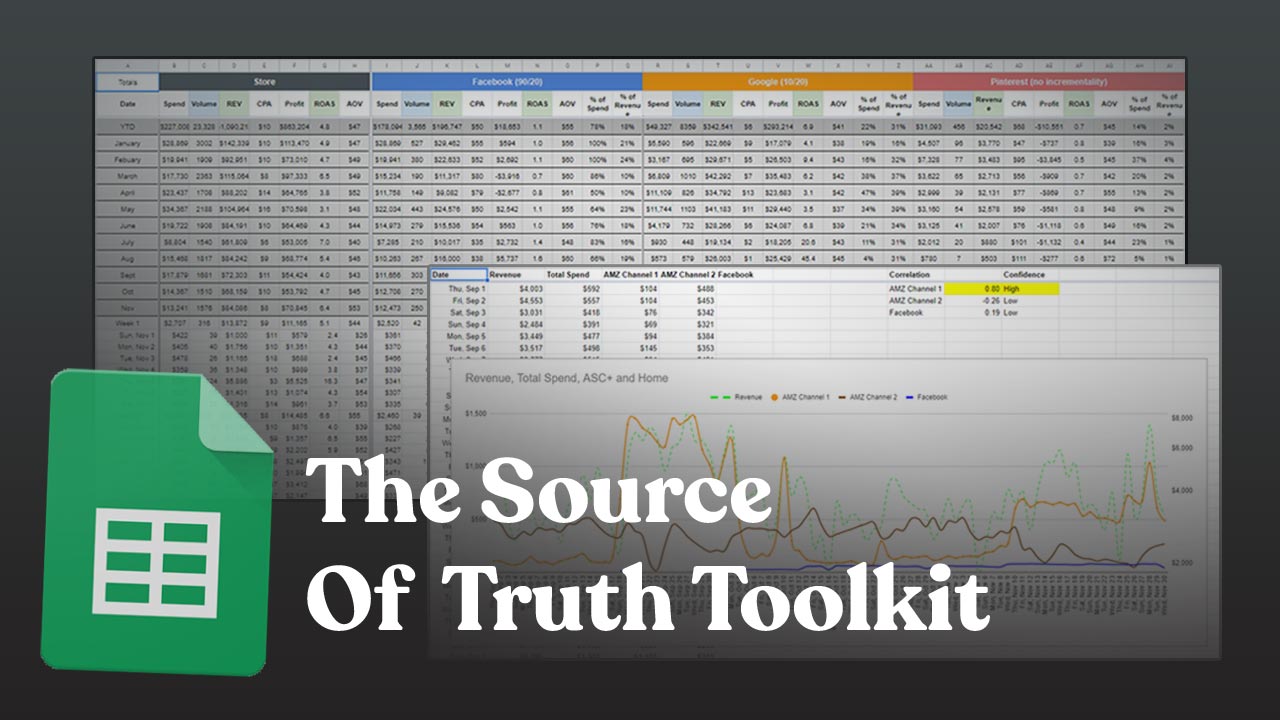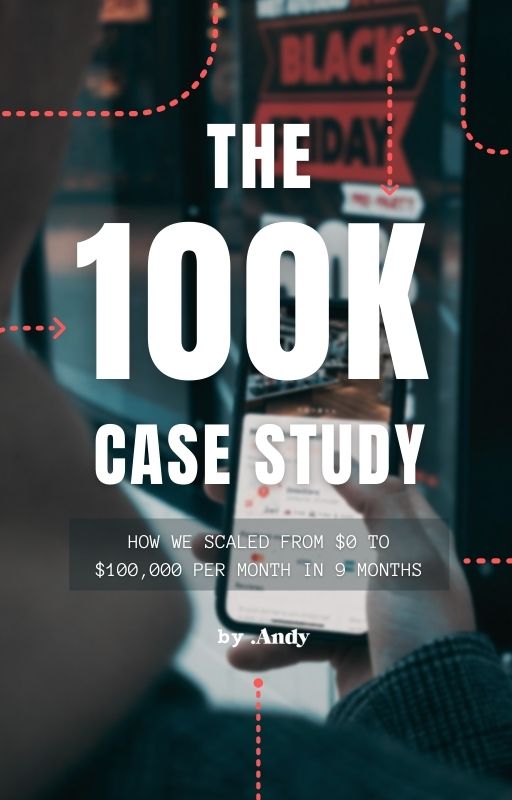Ever wondered how much it cost to reach your audience on Facebook and Instagram and…
- Why are CPM’s rising if you haven’t changed anything?
- How to maintain performance in the ever changing ecosystem?
- How to optimize your ads with less and less data signals?
To address these concerns, let’s take a look at what’s been happening on the Facebook platform.
In the first Quarter of 2021, the number of Facebook’s ad impression increased by 12% to it’s users while ad cost increased by 30% per ad.
This trend continues year over year and is amplified with economic factors like the lockdown.
So why is that happening?
Well… because Facebook is an Auction.
An auction that operates on rules like “supply and demand” and “ad impression opportunities”.
Unlike a static mortgage or car payment, the price for attention is dynamic… like the stock market.
Understanding The Facebook Auction
Your “total value” determines your ad’s priority in the auction.
The ad with the highest total value wins the auction and is shown to the user.
Now, let’s break down the total value into 3 parts:
Highest Total Value = Advertiser Bid x Estimated Action Rate + User Value
When you create an ad, you place an Advertiser Bid (Bid) for the event you selected as your optimization goal (i.e. your desired result).
For eCommerce and DTC brands, this could be a “conversion” goal optimized for “purchase”.
The Estimate Action Rate (EAR) is the likelihood that an impression is shown to this person will lead to your desire result.
The User Value (Value) is how interesting the user is going to find the ad – and if it’s a high quality ad.
You can think of the user value as, “did my brand leave a positive experience for the user?” and “did I help Facebook serve a positive experience to it’s users?”
How the Auction Determines Your Ad
Here are a few scenarios this may play out…
An ad with a lower bid than your competitors may still win the auction if the EAR is high, because it means the ad is relevant.
Conversely, if the bid is higher than your competitor, but Facebook determines it’s user will not take action on the ad (low EAR) and it’s not enjoyable to the user (Value) then the ad will likely lose the auction.
This is how Facebook maximizes both the Advertisers’ value along with Facebook’s user value.
If you are a media buyer, your job is to find the ad with the highest user value that also has high advertiser value (brings you sales)
Now that you understand how the auction works, you can begin answering questions like…
1. “Why are my CPM’s rising?”
There are a few drivers that influence CPM.
One of these drivers are “Advertiser Level Effects“

Imagine if you have an ad that sees:
- An increase in click-through-rate (CTR)
- An increase conversion rate (CVR)
This brings up your EAR and leads to a higher “Total Value” bid and that’s a higher price in CPM.
Now, here’s why this may be a good thing…
It means you’re reaching users with a higher likelihood of completing the action you desire, which leads to lower CPA’s.
This is why retargeting ads have higher CPM’s but better CPA’s and ROAS.
Of course.. you still have to determine if the rise in cost outweighs the opportunity to convert these high-intent users.
For example, “should you really be segmenting your campaigns in top-of-funnel vs bottom-of-funnel? should you really be running that lookalike audience?”
But this is a topic for another post.
Other drivers of CPM are “System Level Effects”
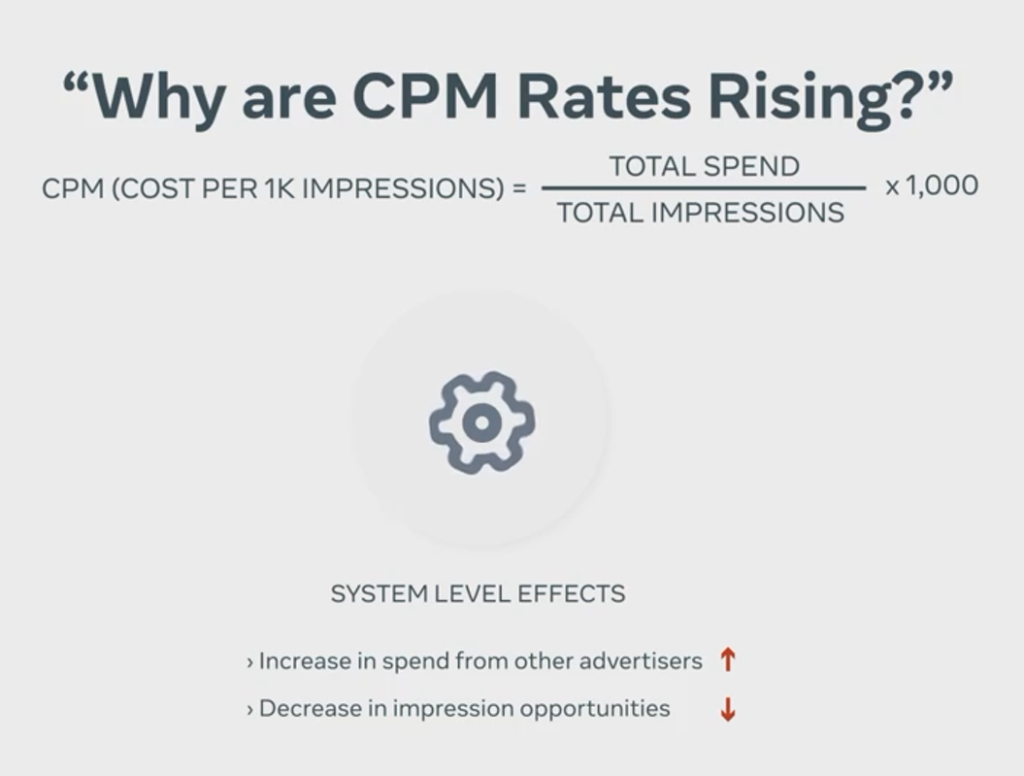
For example, if there is an increase in spend from other advertisers.
Or, there’s a decrease in impression opportunities.
This means Facebook has a lower inventory of attention for you to bid on.
Both these lead to increased in competition on the platform.
How these may play out:
- Seasonal commercial moments (e.g., Black Friday Sales)
- Macro economic Shifts
Supply & Demand
Supply side is determined by user behavior whereas demand is supplied by advertiser behavior.
The price is the intersection between the supply and demand axis.
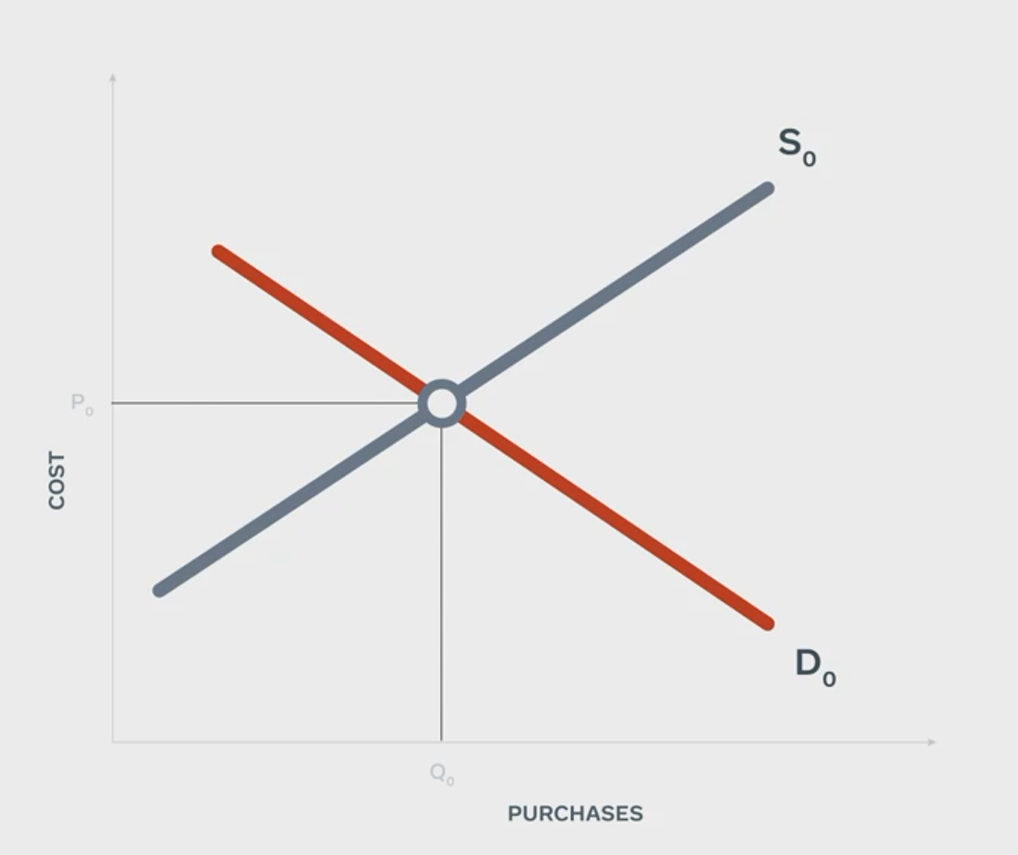
Now, here’s a scenario that plays out during the holidays…
Users are shopping so the supply of purchasers are rising. Concurrently, advertisers are spending more, so demand also rises.
Both these factors lead to more purchase on-platform and flat prices in terms of CPA.
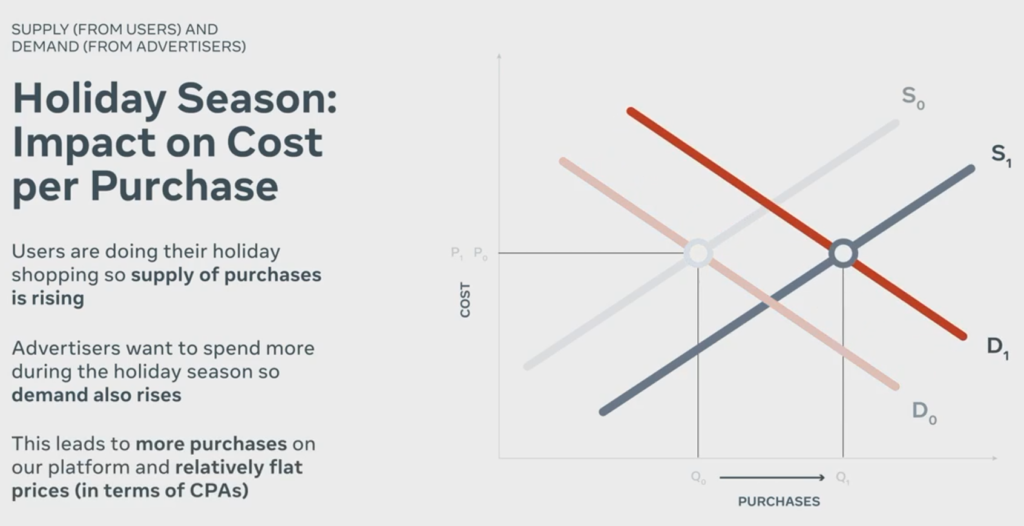
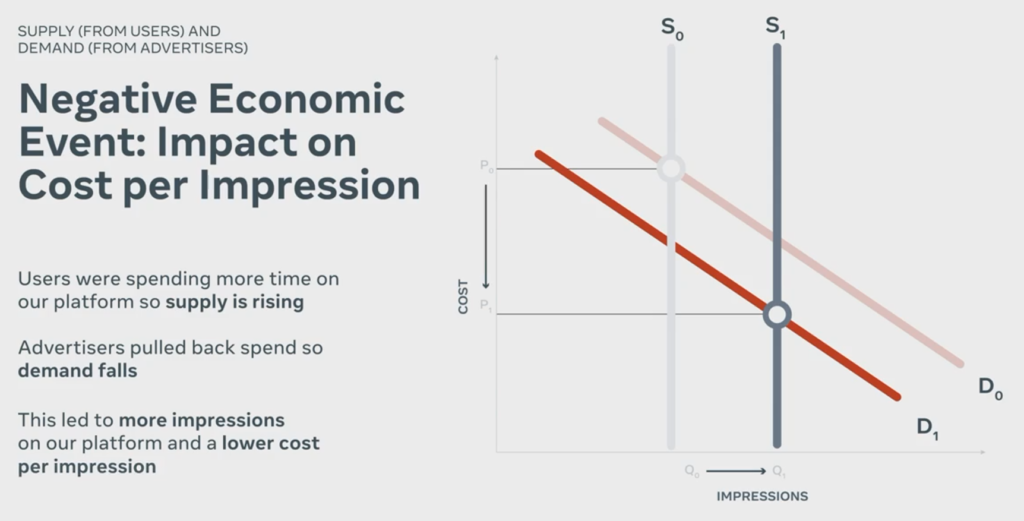
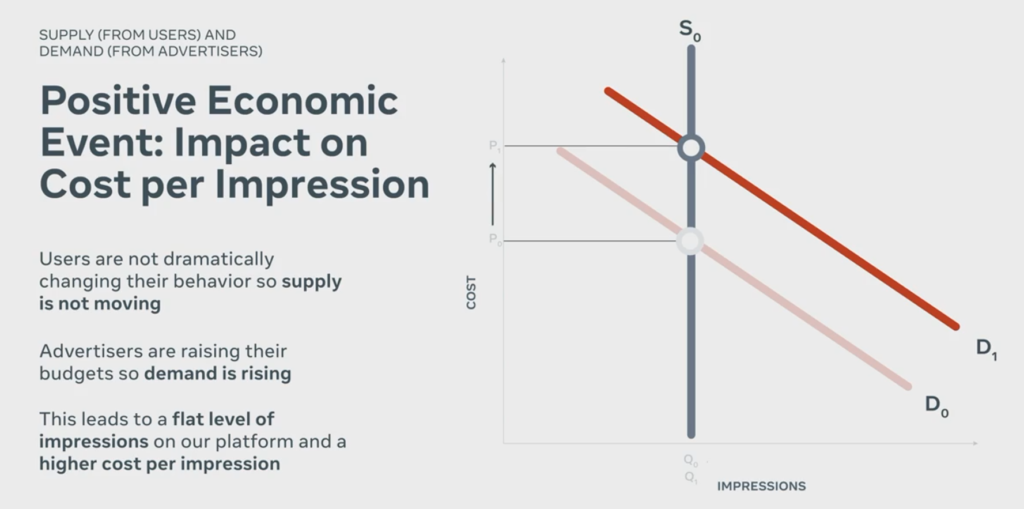
How to Maintain Performance in a Changing Ecosystem with Fewer Optimization Signals?
Macro economic trends will continue to impact the Facebook ecosystem.
For example, the impact of a recent iOS update:
- Aggregated, restricted and delayed data
- increase performance volatility
- Attribute fewer conversions (in some accounts I’ve seen 60%+ in non-attributed data)
However, best practice architecture and optimizations still holds true:
- Consolidate your account structure: help the machine learn more quickly to find the right audience.
- Use longer time-frames to judge performance: because hourly or daily performance is not indicate of your overall campaign, rather, it’s the natural flux of the delayed signal.
- Make fewer, more strategic changes rather than frequent edits: you can more accurately judge the incrementality of these changes, and gives the Aggregation Model more time to adjust.
- Quality Control Strategies: use Conversions API can help mitigate the impact to your Facebook ROI within your ecosystem.
Conclusion & Next Steps
High CPM’s are not always a bad thing and there are many factors that go into the value of the CPM in relation to your CPA.
Reach out to me if you need any help optimizing campaigns better economies of scale, maintain profitable CPM’s and scalable business growth.
I help disruptive DCT/eCommerce brands scale past 6 figures and beyond. I do this through paid social media ads and business model consulting.
Join the discussion, or book a discovery call so we can chat about scaling your brand and disrupting the industry.
